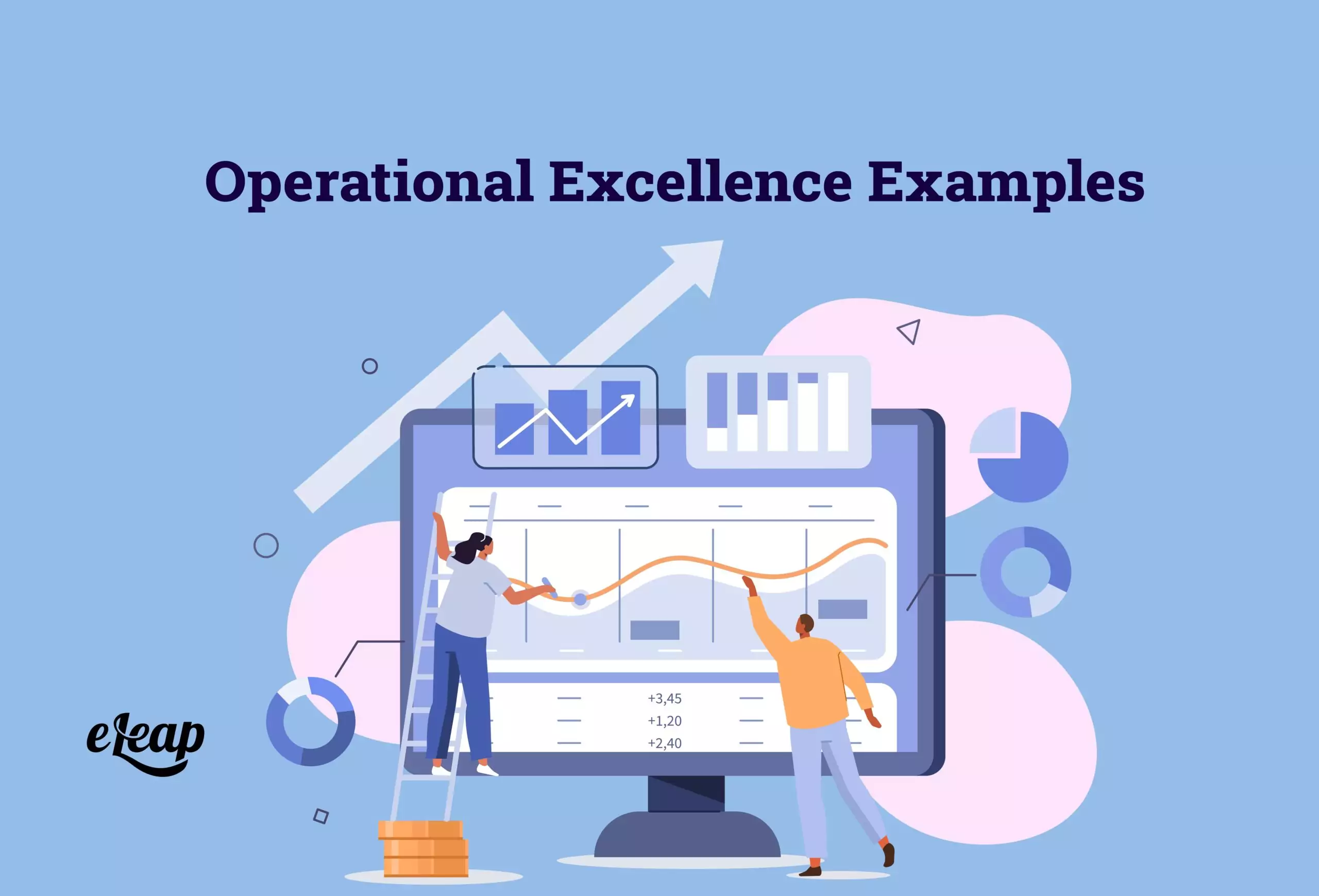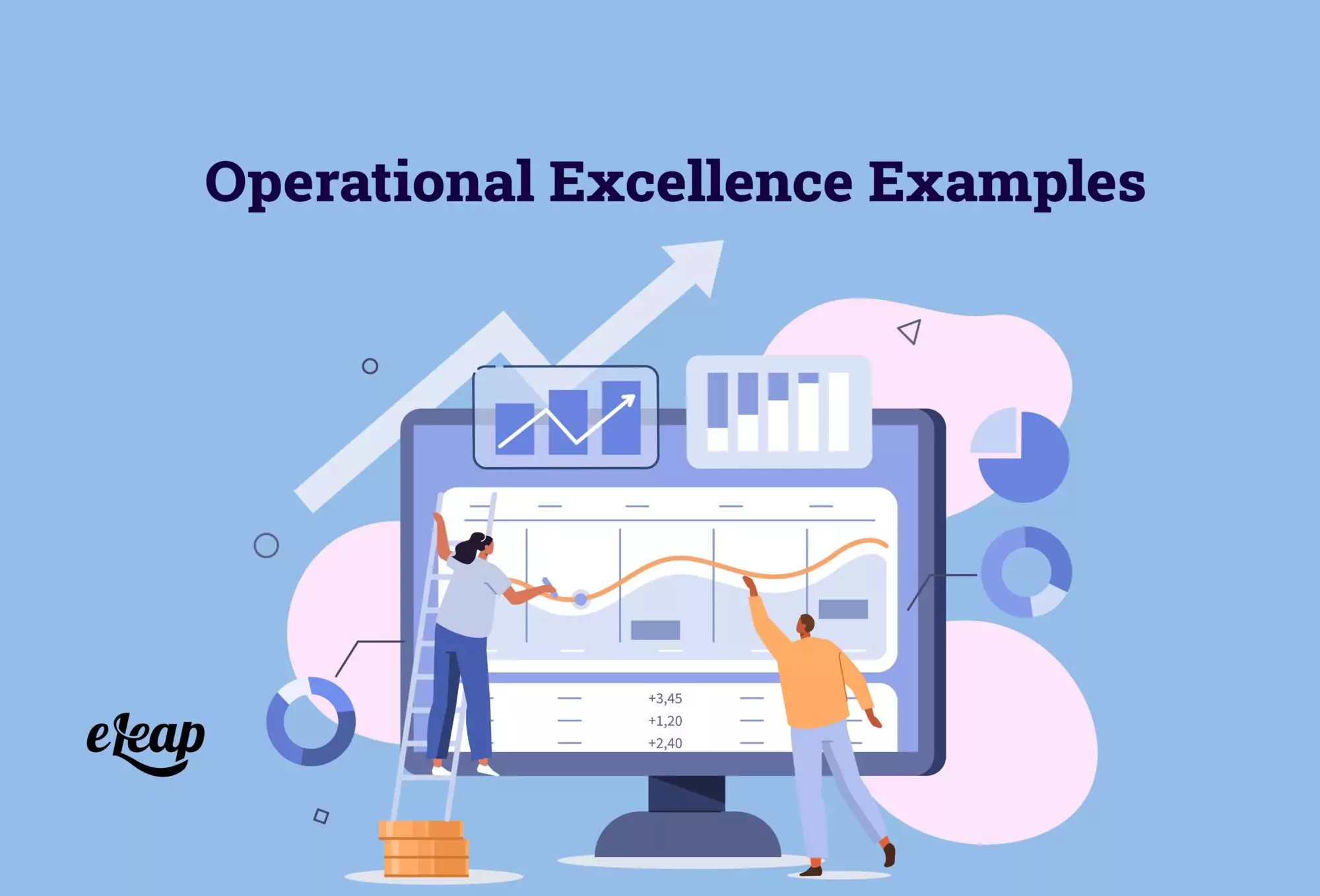Operational Excellence Examples
Organizations excelling at operations

Operational excellence is achieved in a business when all of the employees are able to see how value flows to a customer and fix a problem in that flow when one arises. Basically, is the company performing its tasks seamlessly so that the customer is satisfied? Can the employees notice problems and take it upon themselves to get said problems fixed? That is operational excellence. We will provide examples of organizations displaying operational excellence so you have a road map to improve your organization.

Companies that have trained their employees to achieve operational excellence have a team in which every person knows their role and the importance of their individual contributions. How are they beneficial to the team as a whole? When the responsibilities of their position encounter a problem, how will they fix it without having to be involved and/or wait for a manager to do it for them?
Operational excellence means that the manager is able to focus on big-picture operations instead of the day-to-day tasks for which their employees are responsible. This means that profit and efficiency are at their highest levels on both ends: where the employees are producing or delivering services and at the managerial level, where the manager can focus on development and innovation.
Lean, Six Sigma, and Kaizen: Three Ways to Achieve Operational Excellence
Companies that achieve organizational excellence often choose one of three methodologies: Lean, Six Sigma, and Kaizen.
Lean
Lean in business means a company that works without any extra waste or unproductive processes holding it back. This must be achieved systematically, however. A company cannot just alter processes willy-nilly without knowing why or how certain ones affect profitability and efficiency.
If you want to achieve lean, you need to reduce waste by making more with less. Waste comes in seven forms: mistakes, overproduction, overprocessing, transportation of products, motion, inventory, and wait time.
- Mistakes are costly. They create wasted products, time off for employees who are injured, broken machinery… the list goes on! Eliminating mistakes from all areas helps to ensure that profit doesn’t go straight down the drain.
- Overproduction is just that: making more than a company needs. Specifically, it happens when workers make too much too soon.
- Overprocessing happens when there are too many steps in a task, and it takes too much time to complete. Oftentimes required tasks can be combined or removed if the necessary goals can be achieved elsewhere.
- Transportation is costly, especially if a product is heavy or cumbersome. This is a large source of cost for a company, and if those transportation needs aren’t being used efficiently, then a great deal of money is wasted.
- Motion is separate from transportation in that it involves the moving around of employees or equipment. This takes up valuable time and energy resources.
- Oftentimes employees who need to get feedback or confirmation from an upper-level employee or a worker on another team will spend a great deal of time waiting for this communication, which means wasted time… equaling wasted money.
- Inventory waste happens when a business has to reduce costs to sell more because the demand has dropped now that supply is up. Especially if a product is perishable or time-sensitive, overproduction can eat up a great deal of profit.
Six Sigma
Six Sigma focuses on improving the quality of the product and the customer experience. This is done by reducing the changes to the production of the offering. Their level for achievement is 3.4 or fewer defects per million opportunities.
Companies that do this use the DMAIC framework. This recognizes a problem and constructs a solution through the following steps:
- Define: State the problem.
- Measure: What quantifiable data can be attributed to the problem? Where can it be improved?
- Analyze: What is causing the problem?
- Improve: Determine how to make changes to eliminate the root problem.
- Control: Embed solutions so that the problem does not reoccur.
Kaizen
In Japanese, ‘kaizen’ means ‘continuous improvement.’ Companies who implement this methodology turn their attention toward small, achievable improvements that can be done often. These are ongoing—employees are constantly looking for areas that can be improved and places where resources can be managed more effectively and efficiently.
Believers in the kaizen method trust that small, continuous changes bring about big results over time. Workplaces that have employed this way of doing business also have teams that are innovative and empowered to effect real and lasting change.
Examples of Operational Excellence in the Real World
To understand what this really looks like, we compiled some examples of companies that show operational excellence at a level that others should attain. The following section will give examples of operational excellence in a variety of fields: manufacturing, information technologies, healthcare, construction, and advertising, just to name a few.
Toyota
Toyota was one of the first companies to coin the term “lean” and show the world how to operate with a reduced amount of labor and product waste. Their process flow is constant, predictable, and scalable.
This began in the mid-1900s after every country was recovering from the aftermath of WWII. Toyota was facing bankruptcy and only producing about 2600-2700 cars per year, while Ford was off the charts at 7,000 cars each day. How could they even compete?
Lead engineers Shigeo Shingo and Taiichi Ohno used lean to move Toyota toward processes that enabled them to build more cars with fewer machines and people, less space and time, and overall reduced energy. Toyota is now one of the most profitable and large-scale automobile companies in the world.
Jabil
Jabil is a US-based company that is in the top three electronics manufacturing businesses in the world. They have been in business for over 50 years and are on track to stay profitable and successful for at least another 50.
Jabil focuses on operational excellence through their leadership teams—they strategically align responsibilities with a clear vision from management. They believe that in order to stay competitive and profitable, a business must continually transform itself. They work with a vision toward profit-inducing principles, not just tools. Tools are a way that the company strengthens itself and encourages resilience; however, the team needs to have a foundation rooted in company beliefs.
Wipro
Many companies in the information technology (IT) service know that to achieve operational excellence, you have to continually improve your processes as well as the culture of the workplace.
At Wipro, they offer the globe not only IT services but consulting, outsourcing, and system integration services, as well as solutions to improve other businesses. They know that concentrating on the entire customer experience (with flexible employees and predictability of service times for the consumer), as well as offering a cost base within average margins, will help keep customers loyal and keep the revenue flowing.
SickKids
In the healthcare industry, businesses that are operationally excellent have teams that are empowered to give safe and reliable care to patients as well as improve workplace processes so that they can efficiently use resources, lessen mistakes, remove unnecessary procedures, and improve the health of their patients.
SickKids knows the importance of operational excellence so much that they devote an entire team of five people (many of whom are industrial engineers) to continually find opportunities for improvement, design efficient processes for these improvements, and create solutions that are easily implemented and effective.
MonteVista Homes
Construction work requires numerous processes that need to be streamlined for efficient production as well as documented for safety and training. This is highly technical work that has the opportunity to be incredibly routine (in a good way), or off the rails if everyone does not follow protocol.
MonteVista homes had been on the negative end of that spectrum because of a lack of process documentation. Many projects were falling behind, which in turn affected other teams, thus decreasing efficiency and revenue.
MonteVista used process mapping software to tighten up its process documentation. It moved from struggling with organizational communication to having easily accessed documents and processes, in turn allowing them to bring on and train new employees in a matter of hours.
Mudd Advertising
As a top US ad agency with a focus on automotive, Mudd holds accounts with over 3,000 customers each year. However, they struggled to achieve efficiency because of a lack of process organization and documentation. No one was keeping track of the way tasks were completed, and a great deal was lost in the shuffle.
They brought on operational excellence tools to tighten up their lean workings, letting go of expensive, unnecessary steps, properly documenting processes, creating reference materials for high-quality work, and onboarding and training new employees with these process mapping tools.
Final Thoughts
Operational excellence is something that every business should strive toward. Anyone who owns or manages a company wants to make it successful, efficient, and profitable while retaining innovative, empowered, positive employees who are loyal to the product and company.
There are many ways that a company can achieve operational excellence and many examples of how it has been done successfully. Although the process might seem daunting, the process simply needs to start with the acknowledgment of the need for change and the desire to put the effort in to make it happen.